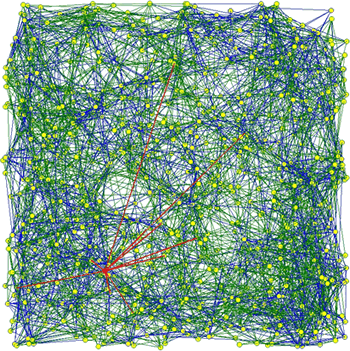 The multiplication of authority spheres poses a particular challenge for the modern legal order. Built around ideas of unity, system and coherence, law encounters difficulties when forced to deal with norms and rules originating from multiple sources and origins. Traditionally, the law of the nation state approached this challenge through conflict and reception rules, which determined whether or not external norms were to have an internal effect. Yet this clear delineation has been called into question as the distance between different spheres of authority – especially national, transnational and international ones – has decreased and their regulatory goals and addressees have come to overlap. As law becomes ‘postnational’, it is under pressure to develop new mechanisms which are able to relate norms from multiple authority spheres to one another.
The multiplication of authority spheres poses a particular challenge for the modern legal order. Built around ideas of unity, system and coherence, law encounters difficulties when forced to deal with norms and rules originating from multiple sources and origins. Traditionally, the law of the nation state approached this challenge through conflict and reception rules, which determined whether or not external norms were to have an internal effect. Yet this clear delineation has been called into question as the distance between different spheres of authority – especially national, transnational and international ones – has decreased and their regulatory goals and addressees have come to overlap. As law becomes ‘postnational’, it is under pressure to develop new mechanisms which are able to relate norms from multiple authority spheres to one another.
On this background, we ask how the legal relations of different spheres of authority are changing. The project proceeds from the hypothesis that the neat compartmentalization of legal orders might be giving way to greater permeability, in the form of enmeshment or even integration, and it is interested in the existence, degree and shape of this potential shift. Two main questions guide the inquiry, one substantive (what norms are used to navigate the relations of authority spheres?) and one formal (how are these relations framed as a matter of principle?). The empirical analysis of four issue areas of global governance will build upon a historical inquiry into the ways in which law dealt with multiplicity in earlier periods. Theoretically, the project aims to use these insights to better understand how law redefines itself as well as key notions such as system, coherence and bindingness, and whether and how elements of a ‘global law’ emerge from the mosaic of multiple orders.
Our team is composed, apart from myself, by Francesco Corradini, Tomáš Morochovič and Lucy Lu Reimers.
 This project is part of a collaborative effort with colleagues from political science and law in and around Berlin, which comes together in the OSAIC project, a research group funded by the Deutsche Forschungsgemeinschaft and the Swiss National Science Foundation. My contribution to the project builds on earlier work of mine on pluralism in postnational law, published in my book, Beyond Constitutionalism.
This project is part of a collaborative effort with colleagues from political science and law in and around Berlin, which comes together in the OSAIC project, a research group funded by the Deutsche Forschungsgemeinschaft and the Swiss National Science Foundation. My contribution to the project builds on earlier work of mine on pluralism in postnational law, published in my book, Beyond Constitutionalism.
Some results of the project have appeared in an article, jointly authored with Francesco Corradini and Lucy Lu Reimers: “Order at the Margins: The Legal Construction of Interface Conflicts over Time”, Global Constitutionalism 9:2 (2020), 343-363. It is part of a special issue of the OSAIC group, “After Fragmentation”, in which we explore the ways in which interface conflicts are managed and what kinds of order emerges as a result. Our article is available as accepted manuscript (free) and as abstract and published version
More of our findings are contained in a volume on Entangled Legalities Beyond the State, published by by Cambridge University Press, with contributions from team members as well as a host of other contributors from different geographical and disciplinary backgrounds. The volume can be openly accessed here.
An article of mine, “Entangled Legalities in the Postnational Space”, lays out some of the core ideas and results of our project; it is forthcoming in the International Journal of Constitutional Law (ICON).
